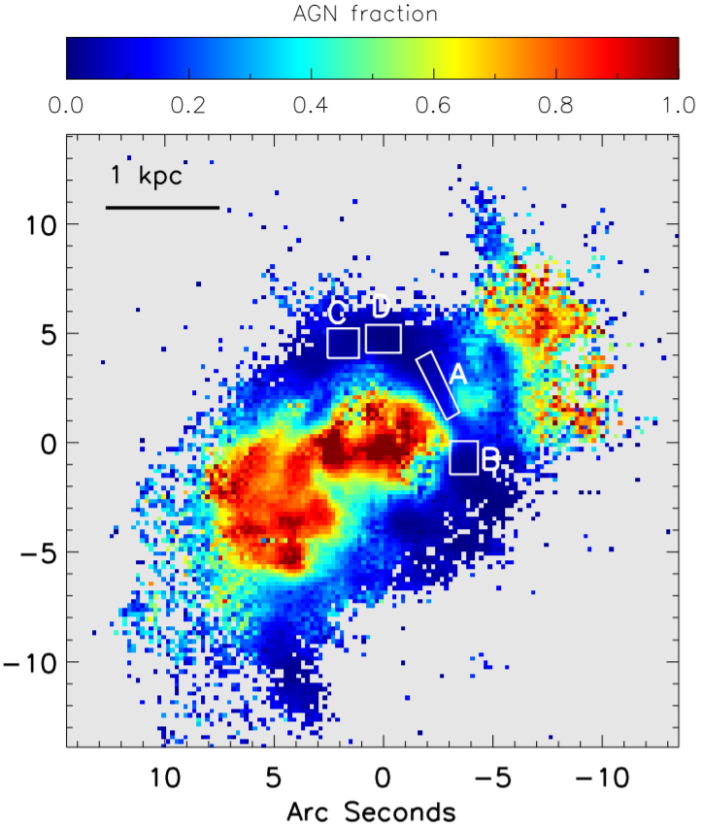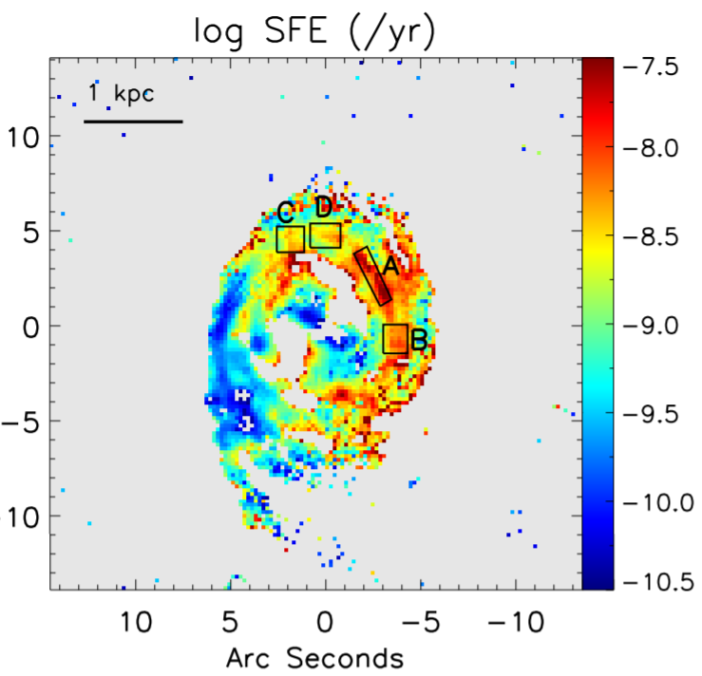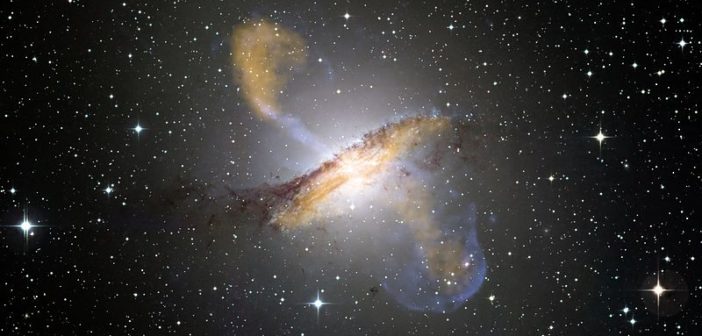Editor’s note: Astrobites is a graduate-student-run organization that digests astrophysical literature for undergraduate students. As part of the partnership between the AAS and astrobites, we occasionally repost astrobites content here at AAS Nova. We hope you enjoy this post from astrobites; the original can be viewed at astrobites.org.
Title: Positive and Negative Feedback of AGN Outflows in NGC 5728
Authors: Jaejin Shin, Jong-Hak Woo, Aeree Chung, Junhyun Baek, Kyuhyoun Cho, Daeun Kang, Hyun-Jin Bae
First Author’s Institution: Seoul National University, Republic of Korea
Status: Accepted to ApJ
One of the many mysteries of galaxy evolution is how the formation of stars is affected by a process called feedback. Unlike comments coming from a teacher on an essay, in the galactic context, feedback is coming from powerful sources of energy such as active galactic nuclei (AGN). Star formation in galaxies requires a lot of dense gas (also called the interstellar medium, or ISM), so any feedback processes that disrupt the presence or the denseness of said gas can affect the ability of a galaxy to form stars. Simulations have shown that AGN are theoretically capable of providing negative feedback by heating up the ISM or blowing it away. However, they might also provide positive feedback by compressing the ISM with their winds, making it denser and triggering bursts of star formation.
Each of these options have theoretical merit and are observed in simulations, but it can be hard to observe the effects in the wild. Today’s paper takes advantage of a particularly well-situated Seyfert 2 galaxy, NGC 5728, to enhance our understanding of AGN feedback processes. The Seyfert 2 designation is used to describe galaxies containing AGN that are similar to quasars, but that have visible host galaxies while most quasars do not.
Positive Feedback from Outflows?
The authors use observations of NGC 5728 in the optical wavelength range, the range visible to humans, to target light from stars and several emission lines generated by ionized (i.e. heated) gas. Targeting emission from a molecular transition (the carbon monoxide CO (J=2–1) transition, to be specific) also helped them trace out the distribution of molecular gas within NGC 5728, which is useful for examining how much material is available to form stars.

Figure 1: Emission map of NGC 5728 in hydrogen alpha, where the color indicates the amount of flux in a given pixel. The position of a star-forming ring and spiral arms are noted with grey dashed lines, while a biconical outflow is traced in white dashed lines. Note the black square, region A, that indicates an intersection between the AGN outflow and the star-forming ring. [Shin et al. 2019]
The authors define three other regions in the star forming ring (B, C, and D in Figure 2) that are located well away from the northwest biconical outflow, and can therefore serve as controls when looking for peculiarities in the star-forming characteristics of region A. Using a BPT diagram, the authors were able to calculate the percentage of flux contributed by stars in each pixel of the image and from this calculate the star formation rate in their selected regions.

Figure 2: Fraction of emission in each pixel from AGN contributions (take 1 minus the AGN fraction to find the stellar contribution). A very blue color corresponds to a low AGN fraction, and thus a pixel containing gas whose hydrogen-alpha emission is dominated by stellar light. [Shin et al. 2019]

Figure 3: The star formation efficiency of the galaxy, which is the ratio between the star formation rate and the available mass of molecular gas to form stars. [Adapted from Shin et al. 2019]
The jury is still out, then, on whether AGN will invariably cause galaxies to have significantly different star formation rates. This scenario is even further complicated by the fact that the biconical outflows may be simultaneously expelling accreted molecular gas from the spiral arms of the galaxy, preventing star formation from occurring there. Regardless, NGC 5728 is providing a rich test case to examine theories of AGN feedback and star formation.
About the author, Caitlin Doughty:
I am a fourth-year graduate student at New Mexico State University. I use cosmological simulations to study galaxy evolution during the epoch of reionization, with a focus on metal absorption in the circumgalactic medium.
